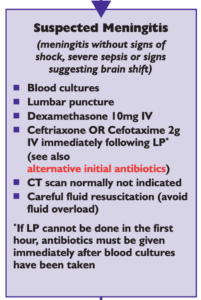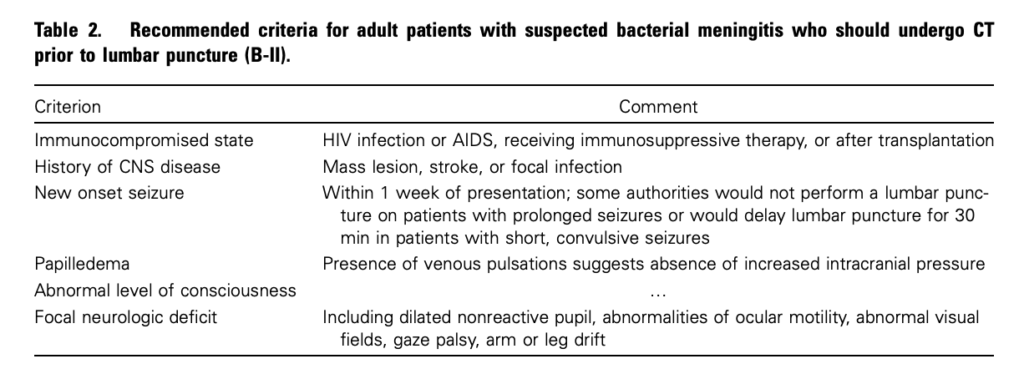The Brain Trauma Foundation has released updated guidelines on traumatic brain injury in children.
Most of the recommendations are Grade C and therefore based on limited evidence.
Indications for ICP monitoring
Use of intracranial pressure (ICP) monitoring may be considered in infants and children with severe traumatic brain injury (TBI) (Grade C).
Four lines of evidence support the use of ICP monitoring in children with severe TBI:
- a frequently reported high incidence of intracranial hypertension in children with severe TBI
- a widely reported association of intracranial hypertension and poor neurologic outcome
- the concordance of protocol-based intracranial hypertension therapy and best-reported clinical outcomes
- and improved outcomes associated with successful ICP-lowering therapies.
Threshold for treatment of intracranial hypertension
Treatment of intracranial pressure (ICP) may be considered at a threshold of 20 mm Hg (Grade C).
Sustained elevations in ICP (>20 mm Hg) are associated with poor outcome in children after severe TBI.
Normal values of blood pressure and ICP are age-dependent (lower at younger ages), so it is anticipated that the optimal ICP treatment threshold may be age-dependent.
Cerebral perfusion pressure thresholds
A CPP threshold 40–50 mm Hg may be considered. There may be age-specific thresholds with infants at the lower end and adolescents at the upper end of this range (Grade C).
Survivors of severe pediatric TBI undergoing ICP monitoring consistently have higher CPP values vs. nonsurvivors, but no study demonstrates that active maintenance of CPP above any target threshold in pediatric TBI reduces mortality or morbidity.
CPP should be determined in a standard fashion with ICP zeroed to the tragus (as an indicator of the foramen of Monro and midventricular level) and MAP zeroed to the right atrium with the head of the bed elevated 30°.
Advanced neuromonitoring
If brain oxygenation monitoring is used, maintenance of partial pressure of brain tissue oxygen (PbtO2) >10 mm Hg may be considered.
Neuroimaging
In the absence of neurologic deterioration or increasing intracranial pressure (ICP), obtaining a routine repeat computed tomography (CT) scan >24 hrs after the admission and initial follow-up study may not be indicated for decisions about neurosurgical intervention (Grade C).
Hyperosmolar therapy
Hypertonic saline should be considered for the treatment of severe pediatric traumatic brain injury (TBI) associated with intracranial hypertension. Effective doses for acute use range between 6.5 and 10 mL/kg (of 3%) (Grade B).
Hypertonic saline should be considered for the treatment of severe pediatric TBI associated with intracranial hypertension. Effective doses as a continuous infusion of 3% saline range between 0.1 and 1.0 mL/kg of body weight per hour administered on a sliding scale. The minimum dose needed to maintain intracranial pressure (ICP)
Temperature control
Moderate hypothermia (32–33°C) beginning early after severe traumatic brain injury (TBI) for only 24 hrs’ duration should be avoided.
Moderate hypothermia (32–33°C) be- ginning within 8 hrs after severe TBI for up to 48 hrs’ duration should be considered to reduce intracranial hypertension.
If hypothermia is induced for any indication, rewarming at a rate of >0.5°C/hr should be avoided (Grade B).
Moderate hypothermia (32–33°C) be- ginning early after severe TBI for 48 hrs, duration may be considered (Grade C).
Note: after completion of these guidelines, the committee became aware that the Cool Kids trial of hypothermia in pediatric TBI was stopped because of futility. The implications of this development on the recommendations in this section may need to be considered by the treating physician when details of the study are published.
Cerebrospinal fluid drainage
Cerebrospinal fluid (CSF) drainage through an external ventricular drain may be considered in the management of increased intracranial pressure (ICP) in children with severe traumatic brain injury (TBI).
The addition of a lumbar drain may be considered in the case of refractory intracranial hypertension with a functioning external ventricular drain, open basal cis- terns, and no evidence of a mass lesion or shift on imaging studies (Grade C).
Barbiturates
High-dose barbiturate therapy may be considered in hemodynamically stable patients with refractory intracranial hypertension despite maximal medical and surgical management.
When high-dose barbiturate therapy is used to treat refractory intracranial hy- pertension, continuous arterial blood pressure monitoring and cardiovascular support to maintain adequate cerebral perfusion pressure are required (Grade C).
Decompressive craniectomy for the treatment of intracranial hypertension
Decompressive craniectomy (DC) with duraplasty, leaving the bone flap out, may be considered for pediatric patients with traumatic brain injury (TBI) who are showing early signs of neurologic deterioration or herniation or are developing intracranial hypertension refractory to medical management during the early stages of their treatment (Grade C).
Hyperventilation
Avoidance of prophylactic severe hyperventilation to a PaCO2 If hyperventilation is used in the management of refractory intracranial hypertension, advanced neuromonitoring for evaluation of cerebral ischemia may be considered (Grade C).
Corticosteroids
The use of corticosteroids is not recommended to improve outcome or reduce intracranial pressure (ICP) for children with severe traumatic brain injury (TBI) (Grade B).
Analgesics, sedatives, and neuromuscular blockade
Etomidate may be considered to control severe intracranial hypertension; however, the risks resulting from adrenal suppression must be considered.
Thiopental may be considered to control intracranial hypertension.
In the absence of outcome data, the specific indications, choice and dosing of analgesics, sedatives, and neuromuscular-blocking agents used in the management of infants and children with severe traumatic brain injury (TBI) should be left to the treating physician.
*As stated by the Food and Drug Administration, continuous infusion of propofol for either sedation or the management of refractory intracranial hypertension in infants and children with severe TBI is not recommended (Grade C).
The availability of other sedatives and analgesics that do not suppress adrenal function, small sample size and single-dose administration in the study discussed previously, and limited safety profile in pediatric TBI limit the ability to endorse the general use of etomidate as a sedative other than as an option for single-dose administration in the setting of raised ICP.
Glucose and nutrition
The evidence does not support the use of an immune-modulating diet for the treatment of severe traumatic brain injury (TBI) to improve outcome (Grade B).
In the absence of outcome data, the specific approach to glycemic control in the management of infants and children with severe TBI should be left to the treating physician (Grade C).
Antiseizure prophylaxis
Prophylactic treatment with phenytoin may be considered to reduce the incidence of early posttraumatic seizures (PTS) in pediatric patients with severe traumatic brain injury (TBI) (Grade C).
The incidence of early PTS in pediatric patients with TBI is approximately 10% given the limitations of the available data. Based on a single class III study (4), prophylactic anticonvulsant therapy with phenytoin may be considered to reduce the incidence of early posttraumatic seizures in pediatric patients with severe TBI. Concomitant monitoring of drug levels is appropriate given the potential alterations in drug metabolism described in the context of TBI. Stronger class II evidence is available supporting the use of prophylactic anticonvulsant treatment to reduce the risk of early PTS in adults. There are no compelling data in the pediatric TBI literature to show that such treatment reduces the long-term risk of PTS or improves long-term neurologic outcome.
Guidelines for the Acute Medical Management of Severe Traumatic Brain Injury in Infants, Children, and Adolescents-Second Edition
Pediatr Crit Care Med 2012 Vol. 13, No. 1 (Suppl.)
Read online
Download PDF (617k)
Other Brain Trauma Foundation Guidelines











